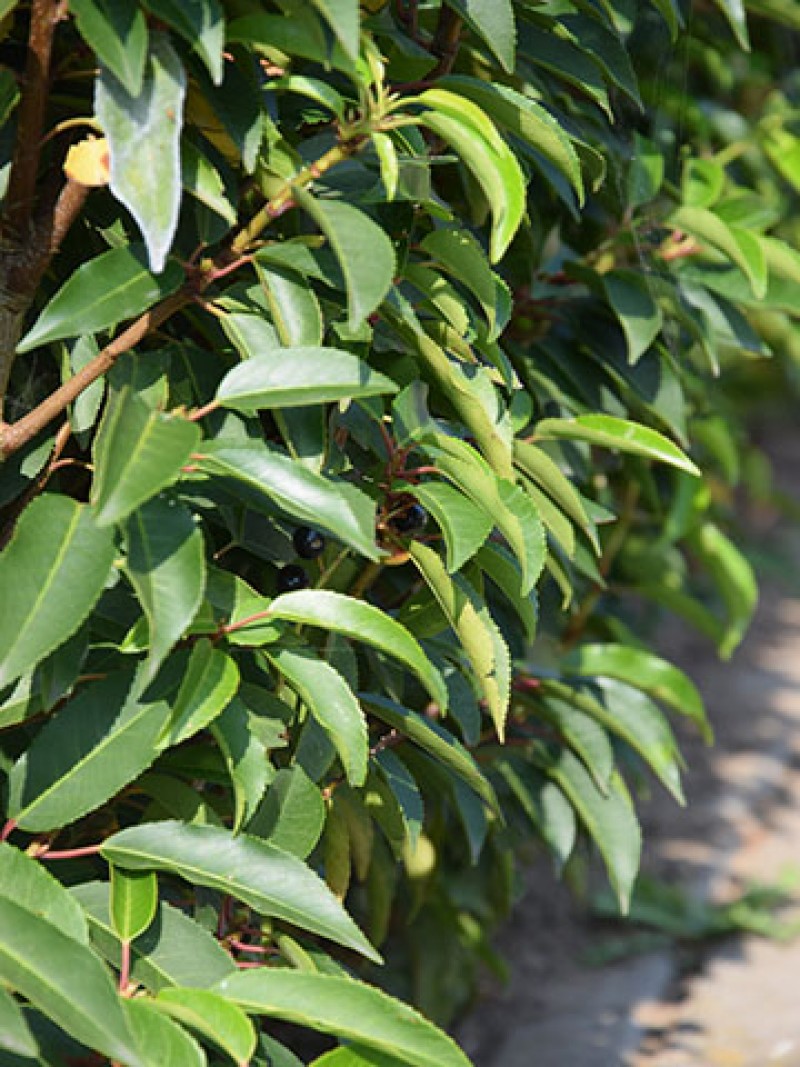
Prunus Lusitanica Eigen kwekerij Portugese laurier Coniferen.nl
Iedere laurierkers of Portugese Laurier is heel geschikt om een haag mee te vormen. De laurierkers wordt hier wel iets meer voor gebruikt omdat deze wat sneller groeit. Zo'n 30-40 centimeter per jaar. Je kunt deze planten dus ook prima "op de groei" kopen. Een Portugese laurier groeit iets minder snel; zo'n 15 centimeter per jaar.
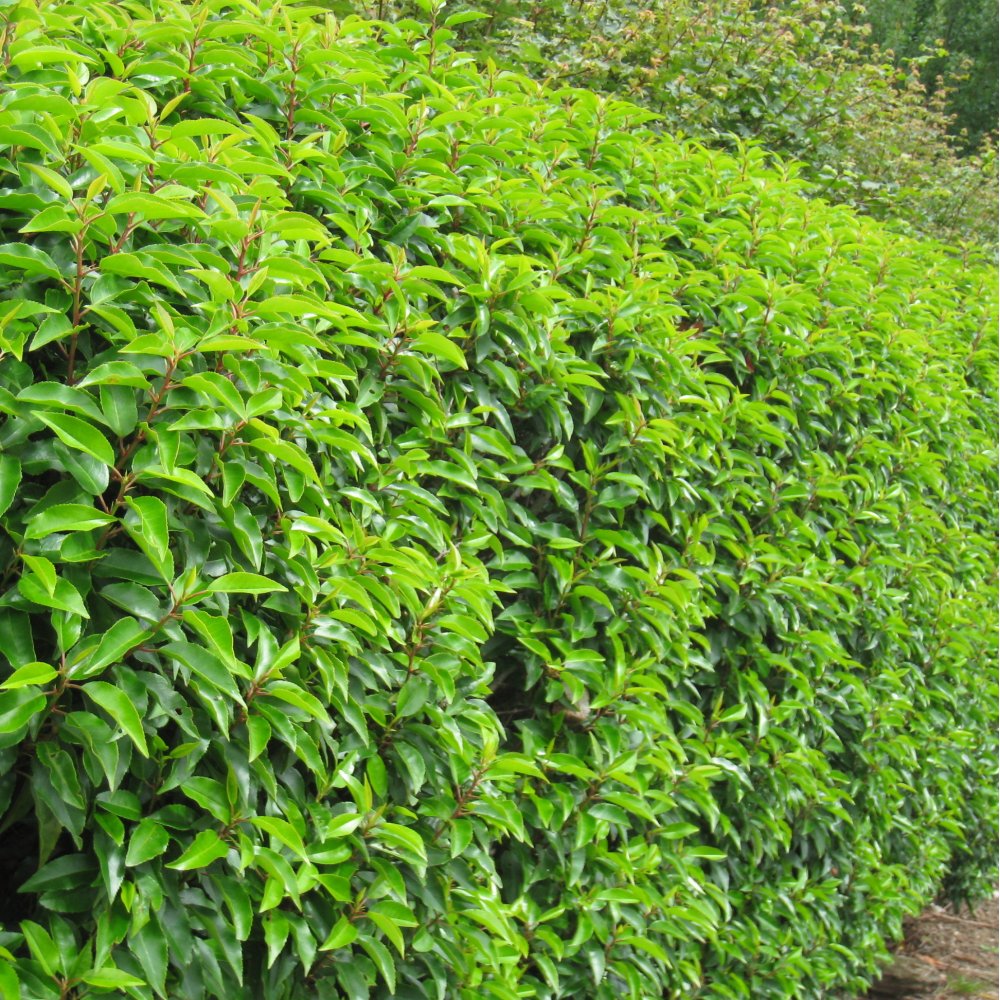
Prunus Lusitanica / Portuguese Laurel Caragh Nurseries
Mooie groene Prunus Portugese laurier & Laurierkers Heester Bekijk in onze winkels • Geweldig groen. Laden.. Vandaag besteld binnen 1-3 dagen bezorgd* Gratis afhalen in. Gebruik van deze site, als onderdeel van Intratuin Nederland B.V., betekent dat je de algemene voorwaarden accepteert en waar van toepassing de algemene voorwaarden van.

Kenmerken van de Portugese laurier Liegesursable
Omschrijving. De familie van de Prunus is enorm. Grote families komen voor in Europa, een groot deel van der Sierkersen komen uit Japan, maar ook andere mooie soorten komen uit de gematigde gebieden van Noord-Amerika. De Portugese Laurier is een goed alternatief voor de echte Laurier, want die is niet goed winterhard. Deze wel!
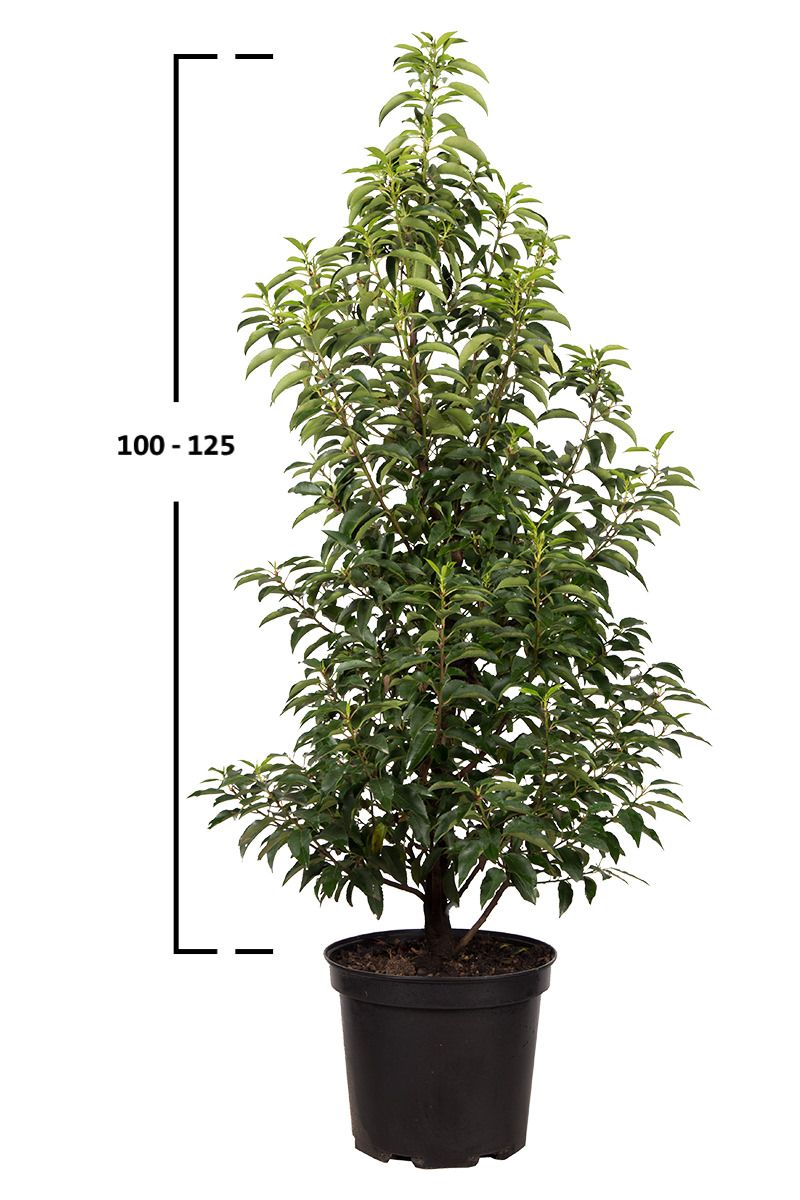
Portugese laurier (Prunus lusitanica) Garmundo
Once the root balled Prunus Lusitanica plants are in the ground, we recommend some light pruning. Trimming the top (and sides if necessary) is essential for the successful establishment of the cultivar. The next major task is to strike the right balance with watering. Portuguese Laurel is fairly demanding when it comes to optimal soil moisture.
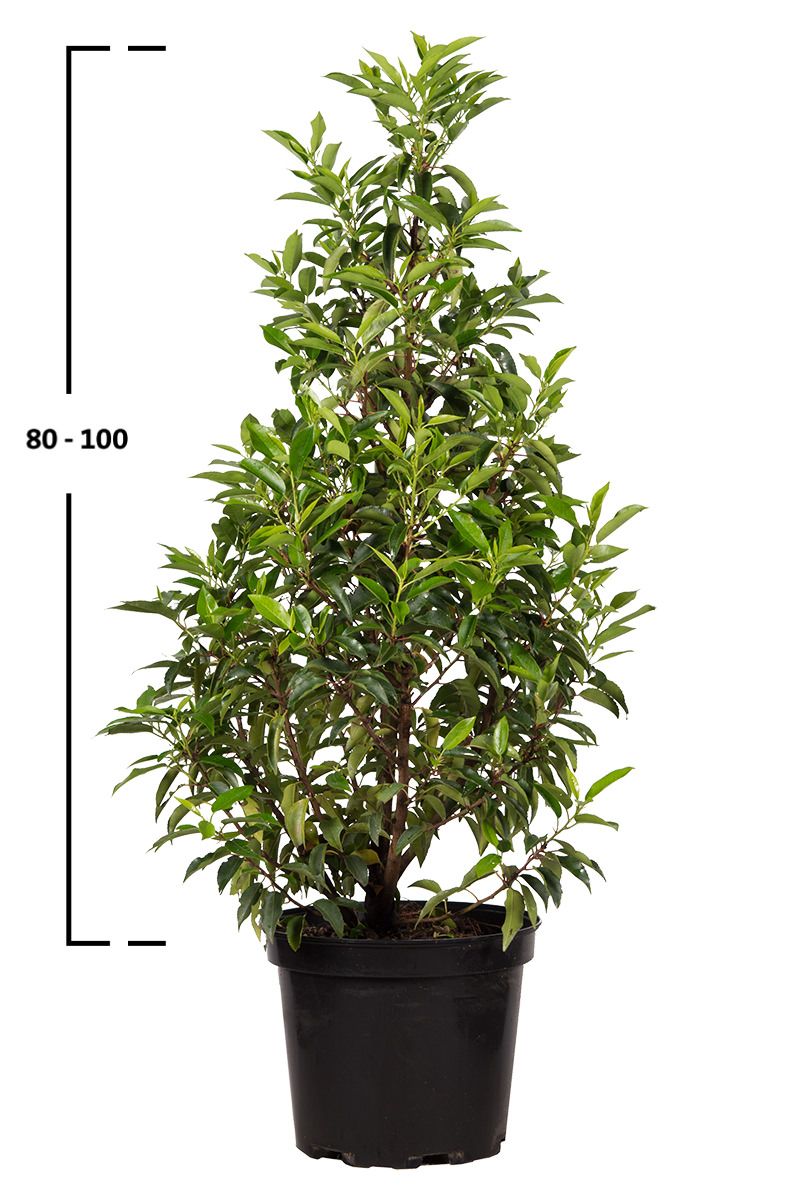
Portugese laurier (Prunus lusitanica) Garmundo
Portugal Laurel, Cherry Bay, Portuguese Laurel Cherry. Native to the Iberian Peninsula, Prunus lusitanica (Portugal Laurel) is a beautiful, large evergreen shrub or small tree with dark brown bark, glossy dark green, leathery leaves (5 in. long or 12 cm), and stems of a lovely deep rhubarb color. It is decorated in late spring or early summer.

Portugese Laurier Stan Verwaaij Haagplanten
Portugese laurier, laurierkers De Portugese laurier is een haagplant met een schitterende uitstraling en ook de Latijnse naam klinkt als muziek in de oren: Prunus lusitanica 'Angustifolia'. Zoals de naamgeving al doet vermoeden is dit type laurier afkomstig uit Portugal. Inmiddels kom je de Portugese laurier tegen in menig Nederlandse tuin, maar ook in de openbare ruimte. En elk jaar worden.
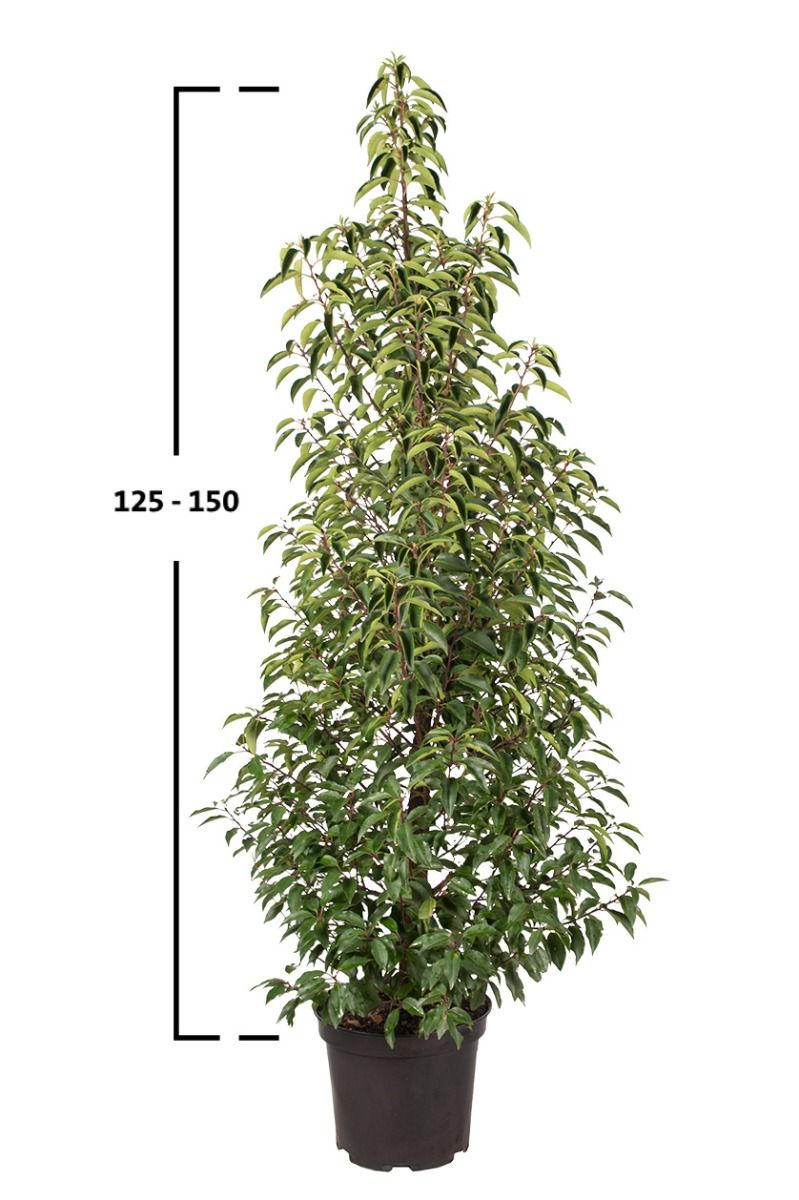
Portugese laurier (Prunus lusitanica) Garmundo
Portugal Laurel will grow to be about 20 feet tall at maturity, with a spread of 20 feet. It has a low canopy, and is suitable for planting under power lines. It grows at a medium rate, and under ideal conditions can be expected to live for 50 years or more.

laurier du Portugal (prunus lusitanica)
Zo gaat de jonge plant zich goed vertakken en krijg je een volle haag. Je snoeit een Portugese laurier op stam met een schone en scherpe snoeischaar of met een heggenschaar. Voor dikke takken gebruik je een snoeizaagje. Draag altijd handschoenen tijdens het snoeien om huidirritatie te voorkomen.

PRUNUS LUSITANICA ANGUSTIFOLIA (PORTUGESE LAURIER) Prins & Tuin
Small white fragrant flowers have five petals and many stamens. Pollinators are drawn to the many fragrant blossoms. Flowers are so profuse, foliage is barely visible. Common Name : Portuguese Cherry Laurel, Portugal Laurel. Botanical Name: Prunus lusitanica. Form : large shrub or small tree with a round dense canopy. Family : Rosaceae.

Portugese laurier (Prunus lusitanica) snoeien, planten... • Intratuin
De prunus lusitanica 'Angustifolia', in Nederland ook wel de Portugese laurier genoemd, is een compacte haagplant. De bladeren zijn klein en donkergroen van kleur. Aan het einde van het voorjaar krijgt de laurier prachtige, witte bloemtrossen die tussen de bladeren verschijnen. In het najaar komen hier rode bessen bij.

Portugese laurier
Portuguese laurel (Prunus lusitanica) is the hedging shrub that gardening legend Monty Don called 'superior in every way' to the cherry (or English) laurel, its main rival for hedge glory.Still, if you own or are planting a Portuguese laurel hedge, this doesn't mean it'll sprout up whatever you do - some forward planning and a little thought is needed.

Laurierkers / Portugese Laurier Prunus Lusitanica Angustifolia 150175cm Haagplantenheijnen.be
Portuguese laurel problems are chiefly related to drought, which can cause poor growth and excessive leaf yellowing, and to wind exposure. While resistant to most pests and diseases, it is susceptible to some leaf infections and vine weevil infestation, which can be lethal. Yet most gardeners know that it ain't as simple as planting a hedge.

Portugese Laurier Prunus Lusitanica Azorica Bestel bij BoomNL BoomNL
Portuguese laurel can actually be considered a tree and a hedge, but botanically speaking is a tree. Native to Spain and Portugal, this is a broadleaf evergreen that thrives in warm climates. It is hardy only through zone 7 in the U.S., and can maybe stretch to zone 6 winters with protection.

Wat is de Portugese Laurier? Breien met plezier
Portugal laurel is a beautiful evergreen shrub with deep dark green leaves.. Key Portugal laurel facts. Name - Prunus lusitanica Family - Rosaceae Type - shrub, bay. Height - 6½ to 20 feet (2 to 6 meters) Exposure - full sun. Foliage - evergreen - Flowering - spring - Fruits - fall (inedible). It bears nice blooms in summer and colored berries in fall and winter.

Portugese laurier (Prunus lusitanica) Directplant
Herkomst. De familie van de Prunus is enorm. Grote families komen voor in Europa, een groot deel van der Sierkersen komen uit Japan, maar ook andere mooie soorten komen uit de gematigde gebieden van Noord-Amerika. Kenmerken en verzorging. De Portugese Laurier is een goed alternatief voor de echte Laurier, want die is niet goed winterhard.

Portugese Laurier Prunus Lusitanica 'Angustifolia' Bolvorm Prosman Planten
Prunus lusitanica, the Portuguese laurel cherry or Portugal laurel, is a species of flowering plant in the rose family Rosaceae, native to southwestern France, Spain, Portugal, Morocco, and Macaronesia (the Azores, Canary Islands and Madeira).. The split between the two subspecies (subsp. azorica, found in the Azores, and subsp. hixa / subsp. lusitanica, found elsewhere) is dated around the.